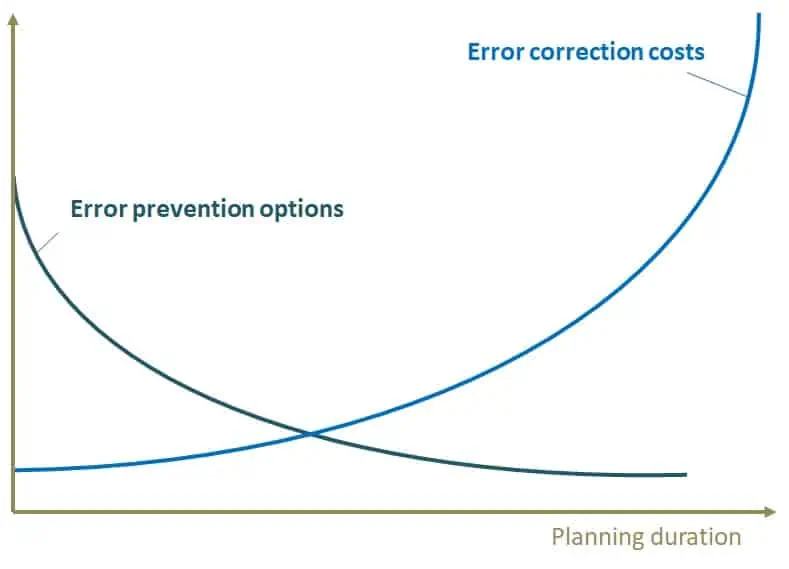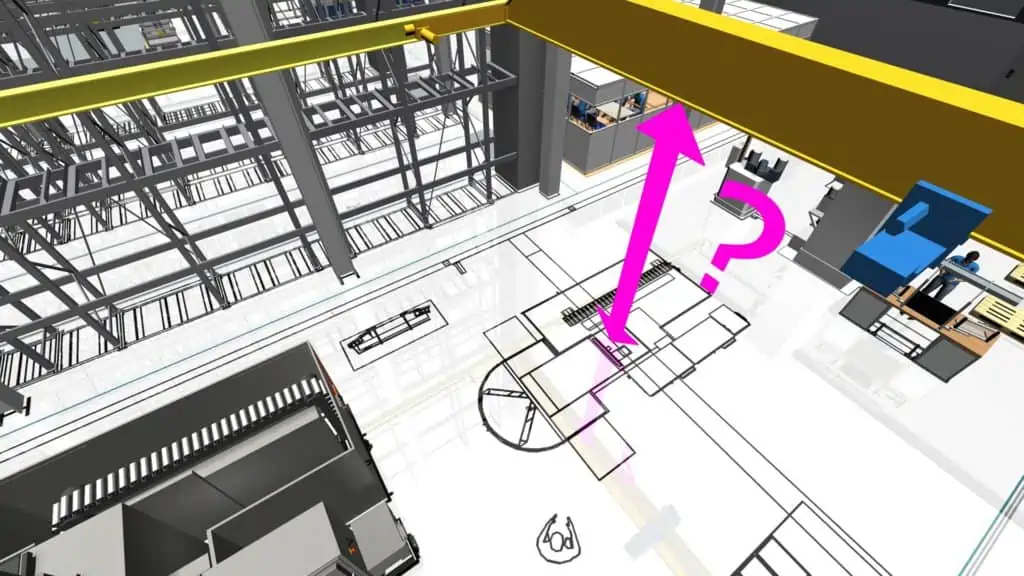
Modern factory planning is no longer imaginable without three-dimensional layout planning. But why? Is it just a trend or does it make sense? In this blog, we want to shed light on two questions in this regard:
- What are the advantages of 3D planning?
- How does 3D planning help to make companies even more successful?
Advantages of three-dimensional planning
The advantages of 3D planning can be quickly summarized. When something new is to be created, it always emerges twice. First, at least in thought, in the form of a model and then in reality. The better and more precisely the model is created or planned, the better the construction will work in reality.
There is a simple correlation behind this: If potential errors are recognized early on, for example in planning, then the follow-up costs are rather low and the error is corrected in the model. If an error is recognized later, for example during the realization on the construction site, then the follow-up costs are rather high, probably things have to be manufactured again. Therefore, it is very important to detect and avoid errors early.

A 3D model comes much closer to reality than a 2D model, therefore errors in three-dimensional planning can be detected and corrected earlier. This reduces costs and shortens implementation times because there are fewer correction loops.

Is three-dimensional planning really more time-consuming?
There is still a rumor that 3D planning is costly and complicated. Fortunately, this is no longer true today. Because 3D planning is very easy to implement with modern planning tools. Let’s take incorporating a change as an example:
- Changes in 2D planning usually result in changes in several views. Adapting the different views is complicated and requires abstract thinking and experience, ultimately, you need specialists for this.
- In 3D planning, only one model needs to be changed, the different views are created automatically. This is not only easier, but also much less error-prone.
And finally, we do not need a CAD specialist for three-dimensional factory layout planning. Suitable tools are as easy to use as a smartphone and function according to simple principles, for example with building blocks similar to LEGO®.
Involve others
But it’s not just about the reduced effort and time required for 3D planning. There are also soft factors, which can also be very important. With three-dimensional planning it is much easier to convince different people of a solution. This is a very important aspect of any planning. No matter how good a planning solution may be, if others cannot be convinced by this solution, then this planning solution is worth nothing. It is not only a matter of convincing investors,
- those involved in planning must be convinced so that they remain motivated,
- employees must be convinced to accept changes,
- customers must be convinced so that they gain confidence.
With the results of a 3D planning, the planning contents can be communicated much better. The probability is much higher that the plan will be implemented.
More success with three-dimensional planning?
Ultimately, the will to develop and change also reveals the difference between less successful and successful companies. Less successful companies often work according to the motto:
We have always done it this way.
These companies are less adaptable and may fall behind at some point. Successful companies deal with new technologies, try out new things and integrate meaningful and valuable methods and technologies into their business. As a result, these companies become more flexible in their thinking and acting and grow faster. Many successful companies today plan in 3D because they have recognized the advantages and they know that 3D planning leads to success. Every company can follow these examples. The onboarding to the topic is very easy nowadays.
No problem, simply subscribe to our Blog-News!



